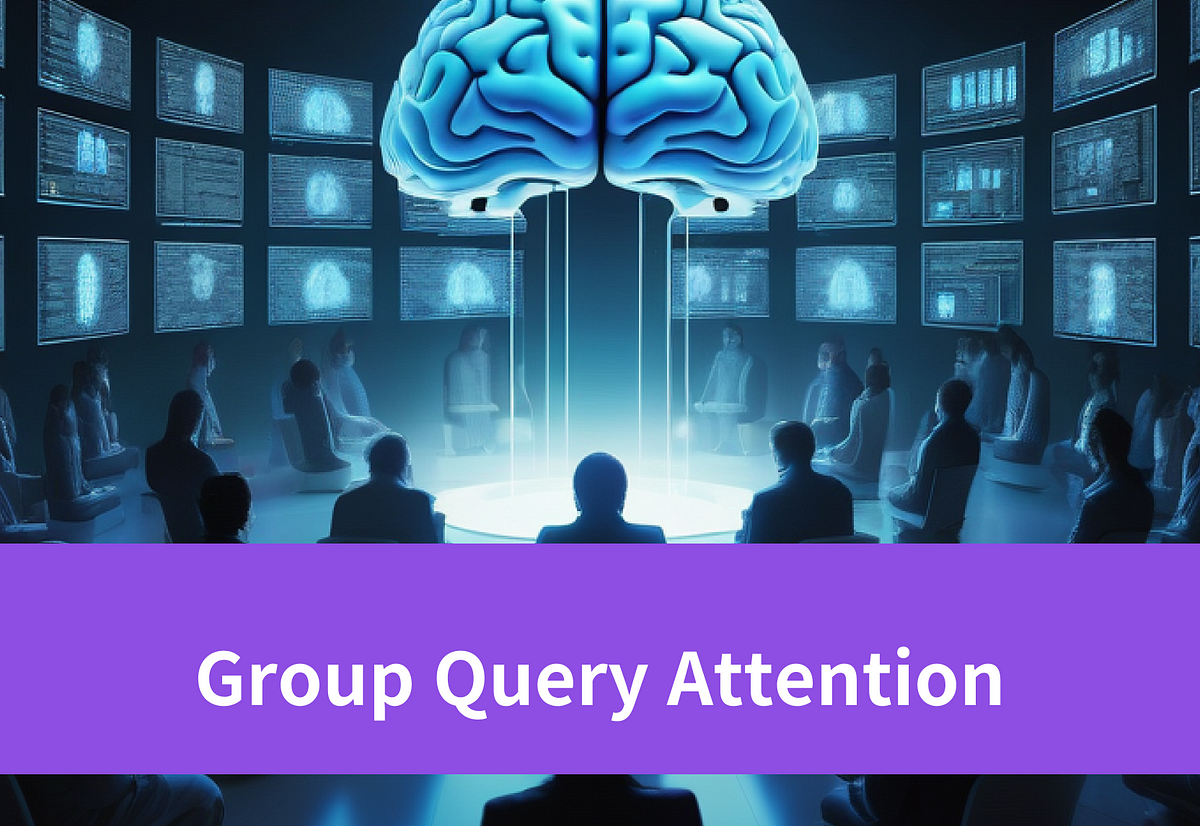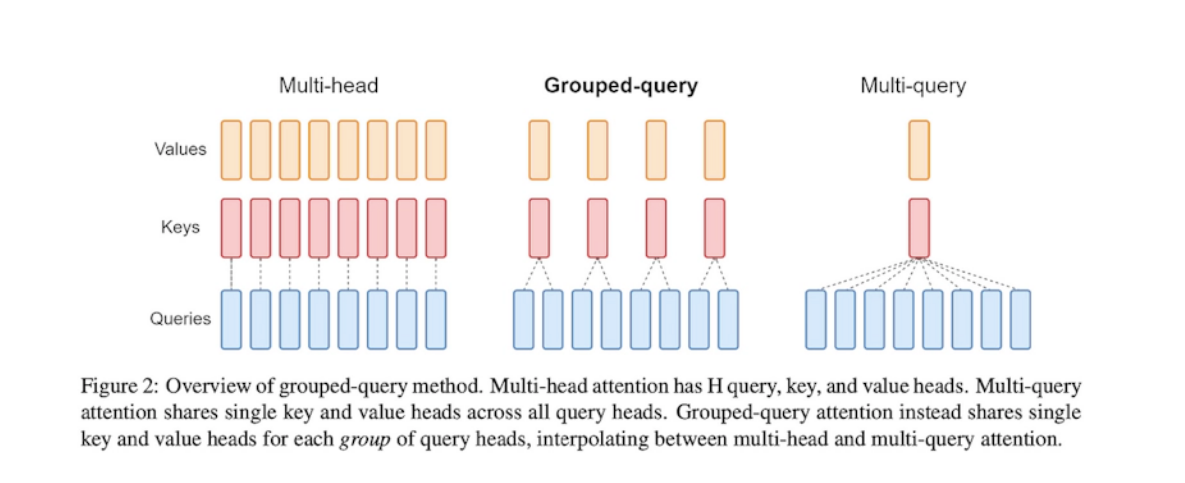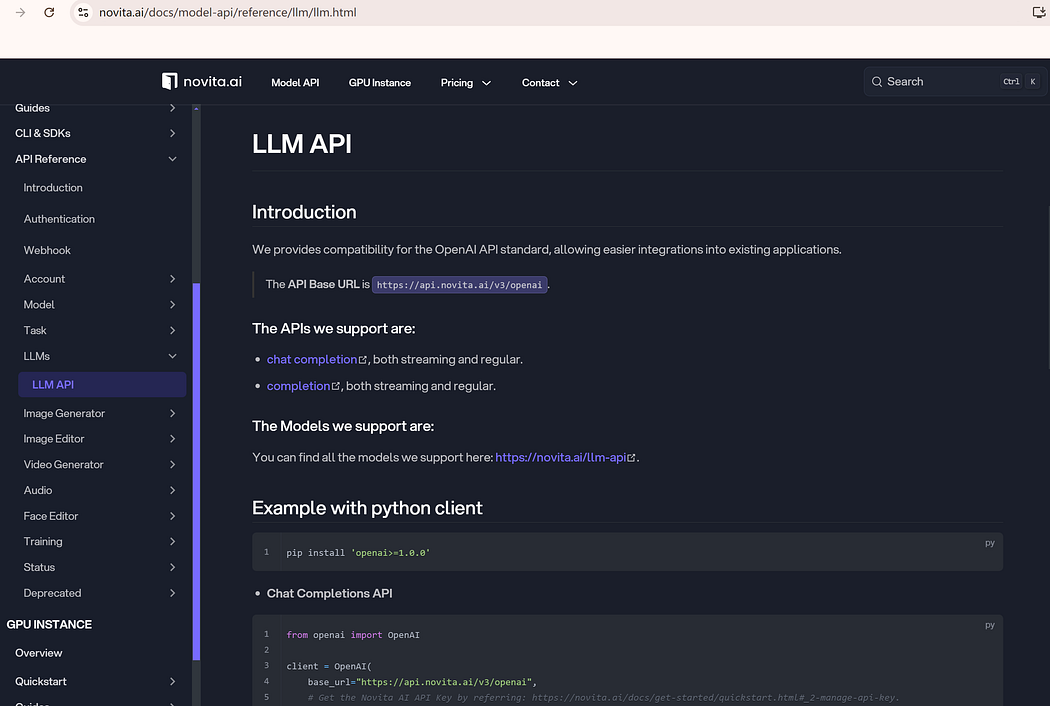Decoding Group Query Attention: Implemented in Popular LLMs

Unravel the secrets of group query attention in popular LLMs. Explore our blog for insights on this cutting-edge technology.
Key Highlights
- Group Query Attention (GQA) enhances the efficiency of Large Language Models (LLMs) by optimizing how they process information.
- GQA acts as a middle ground between Multi-Head Attention (MHA) and Multi-Query Attention (MQA), balancing quality and speed.
- By grouping query heads and using shared key-value pairs, GQA reduces computational needs and memory bandwidth usage.
- This technique proves particularly beneficial for large-scale models, allowing for efficient scaling without compromising accuracy in popular large language models.
- GQA is finding its place in real-world applications, boosting performance in tasks like natural language processing.
Introduction
In the changing world of language models, being efficient is very important. Group Query Attention (GQA) is a strong method to improve how these models handle information. It helps LLMs like Llama 3.1 work better by gathering similar queries together during computation. This blog talks about What is GQA, how it works and popular LLMs using GQA. Developers can stay informed about GQA and related LLMs with this blog.
Exploring the Basics of Group Query Attention
Imagine you have a long, hard sentence to understand. Instead of looking at each word, you could group similar words. This helps you get the main idea more quickly. This is what GQA does. It is a method used in language models to process information better while still keeping important details.
What is Group Query Attention (GQA)?
Group Query Attention (GQA) is an attention mechanism designed to enhance the efficiency of LLMs, particularly during the computationally expensive inference stage. It offers a strategic balance between the comprehensiveness of Multi-Head Attention (MHA) and the simplicity of Multi-Query Attention (MQA).

How does Group Query Attention work?
Group Query Attention optimizes the attention mechanism in transformer models by grouping similar queries. It strikes a balance between Multi-Query Attention (MQA) and Multi-Head Attention (MHA), achieving the quality of MHA with the speed of MQA. GQA divides query heads into groups, each sharing a key head and value head, reducing computational complexity and memory usage while maintaining performance. This approach is particularly useful in large language models for tasks like search engines and document summarization.
Key Features and Benefits of Group Query Attention
Key Features of Group Query Attention
- Interpolation: Balances between multi-query and multi-head attention.
- Optimized Speed: Maintains quality while optimizing speed by using intermediate key-value heads.
- Hierarchical Understanding: Enhances semantic structure comprehension by grouping and focusing on query terms collectively.
- Reduced Complexity: Lowers computational demands, leading to faster inference times without sacrificing quality.
Benefits of Group Query Attention
- Improved Efficiency: GQA reduces computational complexity by clustering queries, leading to more efficient processing.
- Enhanced Performance: It improves the model’s performance and higher quality on various tasks by capturing more relevant information through grouped queries.
- Scalability: GQA scales better with larger datasets and model sizes, making it suitable for extensive applications.
- Reduced Memory Usage: GQA groups key-value heads to address memory bandwidth issues in LLMs, enhancing performance for NLP tasks.
- Parallelism: Enables multi-GPU parallelism for efficient resource utilization.
Implementation Strategies for Group Query Attention
Using GQA in LLMs requires consideration of model architecture, NLP tasks, and computing power. Testing different grouping strategies is essential for optimal performance. Balancing the number of groups is crucial. PyTorch and TensorFlow are valuable tools for integrating GQA into LLMs.
Key Techniques in Developing Group Query Attention Models
- Group Query Mechanism: Utilizing group queries to capture diverse aspects of the input, enhancing the model’s ability to focus on different parts of the data.
- Attention Aggregation: Combining multiple attention heads to aggregate information from various perspectives, improving overall model performance.
- Hierarchical Structure: Implementing hierarchical attention to manage different levels of granularity, allowing the model to process both fine-grained and coarse-grained information.
- Neural Architecture Integration: Seamlessly incorporating GQA into various architectures like transformers and RNNs.
Challenges in Implementing GQA in Large Language Models
- One main challenge is keeping a good balance between using energy efficiently and having a model that works accurately. As the language model gets bigger, it requires more memory and computing resources.
- Choosing the right number of groups for query heads is key. Using fewer groups can make the model run faster, but it might not capture all the details of the input sequence as well as having more groups will.
- Language constantly evolves, making it challenging to categorize queries effectively. Relying solely on meanings may not be sufficient. Advanced strategies that consider context and sentence structure are often required.
GQA Implemented in Popular LLMs
Llama 3 Family Models
Llama 3, developed by Meta AI, incorporates significant advancements in fine-tuning, making it highly useful for various applications, including chatbots, content creation, and complex query handling.
Llama 3 uses a tokenizer with a 128K token vocabulary and was trained on 8,192 token sequences. GQA is used to enhance inference efficiency for all models. Llama 3 series models include Llama 3 8B and Llama 3 70B.

Llama 3.1 Family Models
Llama 3.1 is a collection of LLMs developed by Meta, available in sizes of 8B, 70B, and 405B parameters. These models are designed for text-based applications and excel in multilingual dialogue use cases, outperforming many existing open-source and closed-chat models on industry benchmarks.
Llama 3.1 series models are newly released. Llama 3.1 405B’s release date is July 23, 2024. All model versions use GQA to improve inference scalability. You can test meta-llama/llama-3.1–405b-instruct on novita AI.

Being a top LLM API service platform, Novita AI provides various versions of Llama models including llama-3–8b-instruct, llama-3–70b-instruct, llama-3.1–8b-instruct, llama-3.1–70b-instruct, llama-3.1–405b-instruct. For more info, you can view the Novita AI Featured Models. Additionally, we have breaking news: the cost for Llama3.1 405B instruct reduces to $2.75 per million tokens!


Efficient Way to Leverage Llama 3 and Llama 3.1: LLM API
As mentioned before, Llama 3 and Llama 3.1 series models are highly capable of various tasks. To utilize them effectively, you don’t have to do everything yourself. Novita AI provides cost-effective LLM API integration for these models. Without worrying about computational resources or running deployment scripts from scratch, you can enjoy a ready-to-use LLM API with several clicks.
Step-by-step Guide with Novita AI LLM API
- Step 1: Enter Novita AI and Create an account.
- Step 2: Manage API Key. Go to “Key Management” to manage your keys. You can also click “+ Add new key”.

- Step 3: Make an API call. Enter your API key in the backend to continue the following tasks.
Here’s an example with a Python client using Novita AI Chat Completions API.
pip install 'openai>=1.0.0'from openai import OpenAIclient = OpenAI(
base_url="https://api.novita.ai/v3/openai",
# Get the Novita AI API Key by referring: https://novita.ai/docs/get-started/quickstart.html#_2-manage-api-key.
api_key="<YOUR Novita AI API Key>",
)model = "Nous-Hermes-2-Mixtral-8x7B-DPO"
stream = True # or False
max_tokens = 512chat_completion_res = client.chat.completions.create(
model=model,
messages=[
{
"role": "system",
"content": "Act like you are a helpful assistant.",
},
{
"role": "user",
"content": "Hi there!",
}
],
stream=stream,
max_tokens=max_tokens,
)if stream:
for chunk in chat_completion_res:
print(chunk.choices[0].delta.content or "", end="")
else:
print(chat_completion_res.choices[0].message.content)For more info, you can visit the API Reference Website.

- Step 4: You have a voucher yet with restricted credits to test our products. To add more credit, please visit Billing and Payments and follow the guide on Payment Methods.
The Future of Group Query Attention on Model Efficiency
Adding GQA to LLMs improves model performance by simplifying the attention mechanism, resulting in faster training and inference times. This enhancement allows for handling larger models and datasets, leading to stronger NLP solutions.
Improving Computational Efficiency and Accuracy
GQA optimizes computer performance by streamlining attention calculations. It enhances speed without compromising accuracy, efficiently identifying complex patterns in data. GQA reduces memory bandwidth usage, enabling the training of larger language models for improved performance across various NLP tasks.
The Future of Model Scalability with GQA
As machine learning advances, scaling models effectively is crucial. GQA enhances model scalability by efficiently handling large amounts of data and addressing issues with traditional attention methods. This enables the creation and utilization of larger language models for complex NLP tasks and extensive datasets. GQA serves as a key element in developing human-like text generation models rapidly and accurately, revolutionizing various fields such as NLP, machine translation, personalized education, and AI-driven creative writing.
Conclusion
In conclusion, Group Query Attention (GQA) changes how Large Language Models handle complex questions. This makes them work better and grow more easily. By using GQA, businesses can do better with tasks related to understanding language and get more accurate results in different areas. There are some challenges in using GQA, but it holds great promise for improving LLM structures. Its special method sets it apart from other attention types. This makes it an important tool for making better performance. As GQA keeps developing, there is a lot of potential for new improvements in language processing skills.
FAQs
What is the difference between multi-head attention and group query attention?
MHA uses multiple attention heads to capture diverse relationships within the input sequence. GQA clusters queries into groups to optimize attention computation in large models or datasets.
How do Large Language Models benefit from GQA?
GQA helps LLMs better understand the context and nuances of questions. It uses fewer groups to speed up processing. This happens without losing much accuracy.
Is Llama 3.1 open source?
It is licensed under the Llama 3.1 Community License Agreement, providing a limited license to use, reproduce, distribute, and modify the Llama Materials. For over 700 million monthly active users in the preceding calendar month, you must request an additional license.
What are the potential future developments in Group Query Attention?
GQA will create better ways to group information. This might use machine learning to improve how queries are grouped. It will look at the context and how concepts are related.
Novita AI is the All-in-one cloud platform that empowers your AI ambitions. Integrated APIs, serverless, GPU Instance — the cost-effective tools you need. Eliminate infrastructure, start free, and make your AI vision a reality.
Recommended Reading
1.Llama 3 vs ChatGPT 4: A Comparison Guide